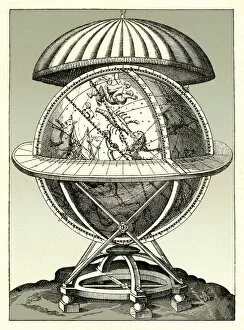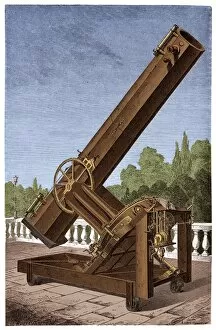Celestial Sphere Collection (page 3)
"The Celestial Sphere: A Journey Through Time and Cultures" Step into the fascinating world of celestial mechanics as depicted in medieval artwork
All Professionally Made to Order for Quick Shipping
"The Celestial Sphere: A Journey Through Time and Cultures" Step into the fascinating world of celestial mechanics as depicted in medieval artwork. The Flammarion engraving, with its depiction of the edge of the firmament, invites us to ponder the mysteries beyond our atmosphere. Delve further into history and explore Hans Holbein the Younger's woodcut from Sebastian, showcasing intricate details of the phases of the moon. This masterpiece transports us back to a time when lunar cycles held great significance. Traveling to the Southern Hemisphere, we encounter Carel Allard's mesmerizing depiction that captures the celestial wonders unique to this region. Marvel at how different cultures interpret and represent their understanding of our vast universe. Venturing eastward, a Chinese celestial sphere from Tang Dynasty takes center stage. Its colored engravings offer a glimpse into ancient astronomical knowledge passed down through generations. The zodiac chart incorporating late 15th-century woodcut signs reminds us of humanity's fascination with astrology throughout history. Each sign holds symbolic meaning connecting individuals to cosmic forces. Continuing our exploration, we encounter Robert Fludd's diagram linking hidden divinity with our manifest world—an intriguing blend of philosophical and theological truths rendered in an exquisite woodcut from Utriusque Cosmi. As we gaze upon a celestial globe adorned with depictions representing zodiacal signs, it becomes evident that these heavenly bodies have long captivated human imagination across cultures and eras. Intriguingly juxtaposed is an engraving depicting The Hereford Fungus Festival—a reminder that even amidst scientific pursuits, celebrations rooted in nature continue to thrive throughout time. Finally, let us not forget Nicolaus Copernicus' presence in Rome during his groundbreaking discoveries about heliocentrism—his legacy forever altering humanity's perception of our place within this vast cosmos.












